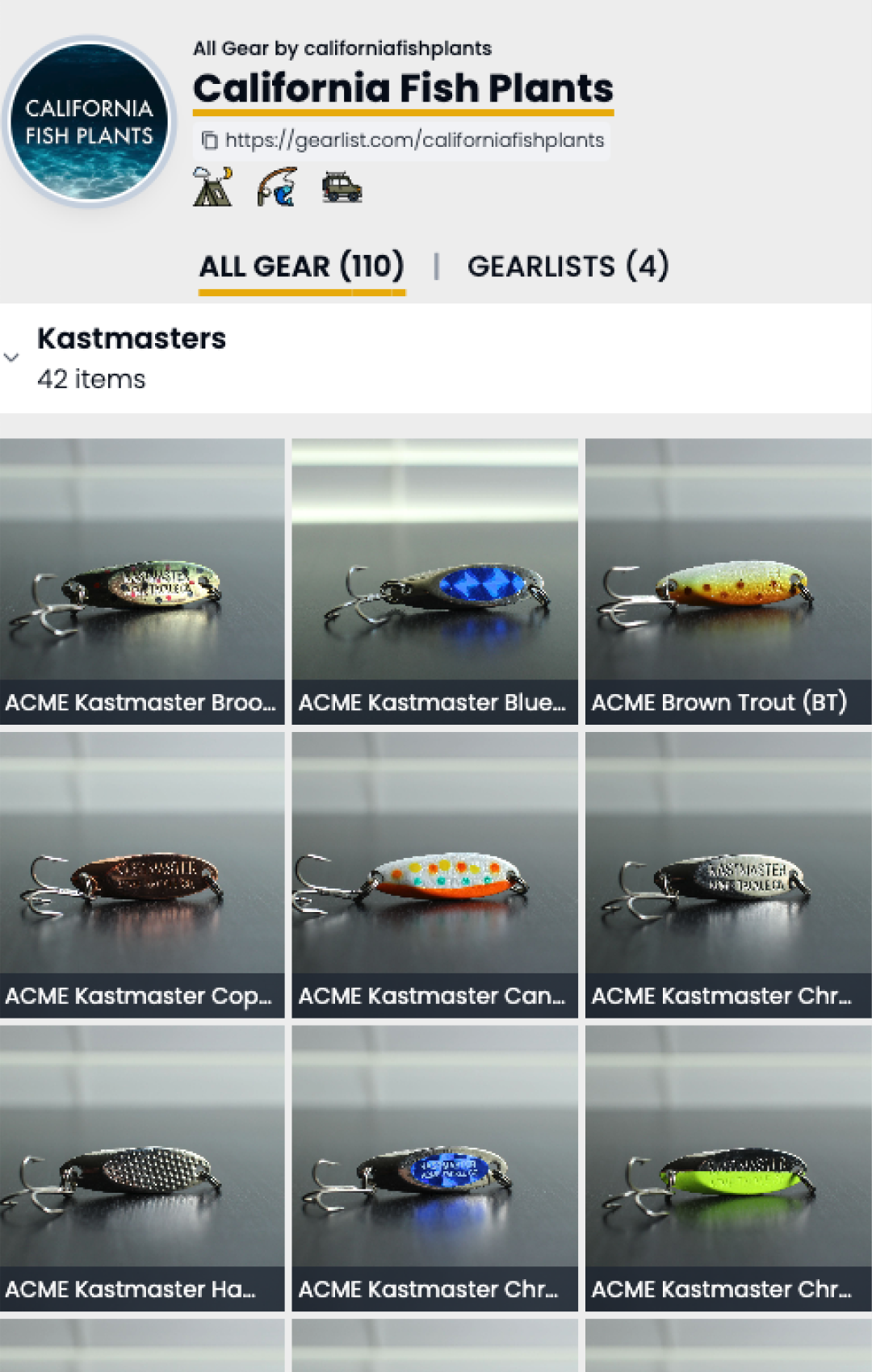Nestled as the crown jewel of the Mammoth Lakes, Lake Mary stands tall as a haven for anglers seeking both the grandeur of nature and the challenge of catching a diverse array of trout species. This comprehensive guide unfolds the unique types of fish awaiting your line, provides historical insights, and offers a roadmap of top tips, strategies, and gear recommendations to make your fishing experience at Lake Mary truly exceptional.
📈 Latest Fish Plants
Fish here often?
How To Read Fish Plant Graphs
To interpret fish plant graphs effectively, consider the following key elements:
- Blue Vertical Bars and Numbers:
- Representation: The blue vertical bars on the graph represent individual fish plants.
- Weight Measurement: The associated numbers indicate the total weight of the plants in pounds (lbs.) that occurred during a specific week.
- Significance: Monitoring these bars helps identify weeks with higher planting activity, aiding anglers in selecting optimal times for fishing near recent plantings.
- Orange Trend Line:
- Purpose: The orange trend line represents the moving average of all fish plant activities at the specified location.
- Indicator of Activity: A rising trend line suggests a consistent increase in planting activity over the designated period. This indicates the potential for more catch opportunities and signifies a growing fish population over the weeks.
- Interpreting the Moving Average:
- Upward Trend: A rising moving average implies an upward trajectory in planting activity, indicating an increasing number of fish being introduced into the area. This suggests a positive outlook for anglers, as it implies a larger and potentially more accessible fish population.
- Downward Trend (Not Specified): The description does not provide information on the interpretation of a decreasing trend in the moving average. It might be beneficial to include information on what a decreasing trend could signify in terms of fishing prospects.
- No Data Present:
- Possible Explanations: If no data is visible on the graph, it may indicate that the location had no fish plants in the last three months. Alternatively, the absence of data could be due to non-disclosure of fish plants for that location.
- Natural Population: Some fishing areas in California rely on the natural growth of fish populations, and graphs may not show plants if this is the case.
- Graph Disclaimer:
- Data Source: The graphs reflect a combination of publicly disclosed data and estimates. Some locations may disclose fish plants without specifying exact amounts.
- Not Universal: Not all fishing areas have fish plants, and the natural growth of fish populations plays a significant role in many California fishing locations.
Understanding these elements will empower anglers to make informed decisions about when and where to fish based on historical fish plant data.
Note: If no data is present in the graph above, this location may not have had any plants the last 3 months, or may not have publicly disclosed plants. Graphs reflect both publicly disclosed data and estimates, as some locations disclose plants, but not exact amount.
🗺️ Map & Fishing Location
Types of Fish You Can Expect to Catch Here:
- Brown Trout: Undoubtedly the monarch of Lake Mary, these robust fighters can attain impressive sizes. Fly fishing and trolling are effective methods for targeting these majestic creatures.
- Rainbow Trout: Acrobatic and plentiful, rainbow trout in Lake Mary are a joy to catch. Lures and flies prove effective, and their delightful taste makes them a sought-after catch.
- Alpers Trout: A native underdog, Alpers trout may be smaller, but their scrappy nature makes them an exciting challenge. Look for them near weed beds, showcasing their affinity for shallower waters.
- Lahontan Cutthroat Trout: Considered Mary’s hidden gem, these selective eaters can be found near inlets. Nymph fishing is recommended to entice these elusive giants.
Local Insights:
- Golden Hours for Fishing: Early mornings and evenings are prime times as trout become more active in low light conditions.
- Boats and Kayaks for Coverage: Given Lake Mary’s expanse, renting a boat or kayak provides access to hidden coves and deeper areas, enhancing your chances of a successful catch.
- Power of Bait: While fly fishing is popular, traditional bait like PowerBait and nightcrawlers can be highly effective, especially for enticing rainbows.
- Regulation Awareness: Stay informed about size limits and catch restrictions to contribute to the preservation of the fishery. Regularly check and adhere to the latest regulations.
Unique Things to Watch For:
- Osprey Dives: Witness the spectacular aerial acrobatics of ospreys plunging into the water to snatch unsuspecting fish.
- Changing Water Levels: Lake Mary’s water levels fluctuate, revealing new banks and weed beds. Keep an eye out for these changing areas, which can become temporary fish havens.
- Bugs and Biting Flies: Mosquitoes and flies can be bothersome, particularly in the summer. Pack repellent and consider fishing during the less active early mornings or evenings.
Specific Locations:
- The George Inlet: A trout magnet, especially during hatches of small insects. Look for rising fish or cast streamers along the banks.
- The Mary/Mamie Channel: A highway for migrating fish. Troll or jig for suspended trout in this channel between the two lakes.
- The Northeast Shore: This rocky shoreline provides excellent structure for holding trout. Fish the drop-offs with lures or flies, paying attention to weed edges.
- The Dam: A hotspot, with fish congregating below the rushing water. Try casting lures or nymphing near the edges of the dam.
Remember, these are starting points for your Lake Mary adventure. The true beauty of this lake lies in exploring its hidden corners, developing your own strategies, and immersing yourself in the thrill of the catch. So, seize your rod, soak up the majestic scenery, and relish the excitement of reeling in your prize!



